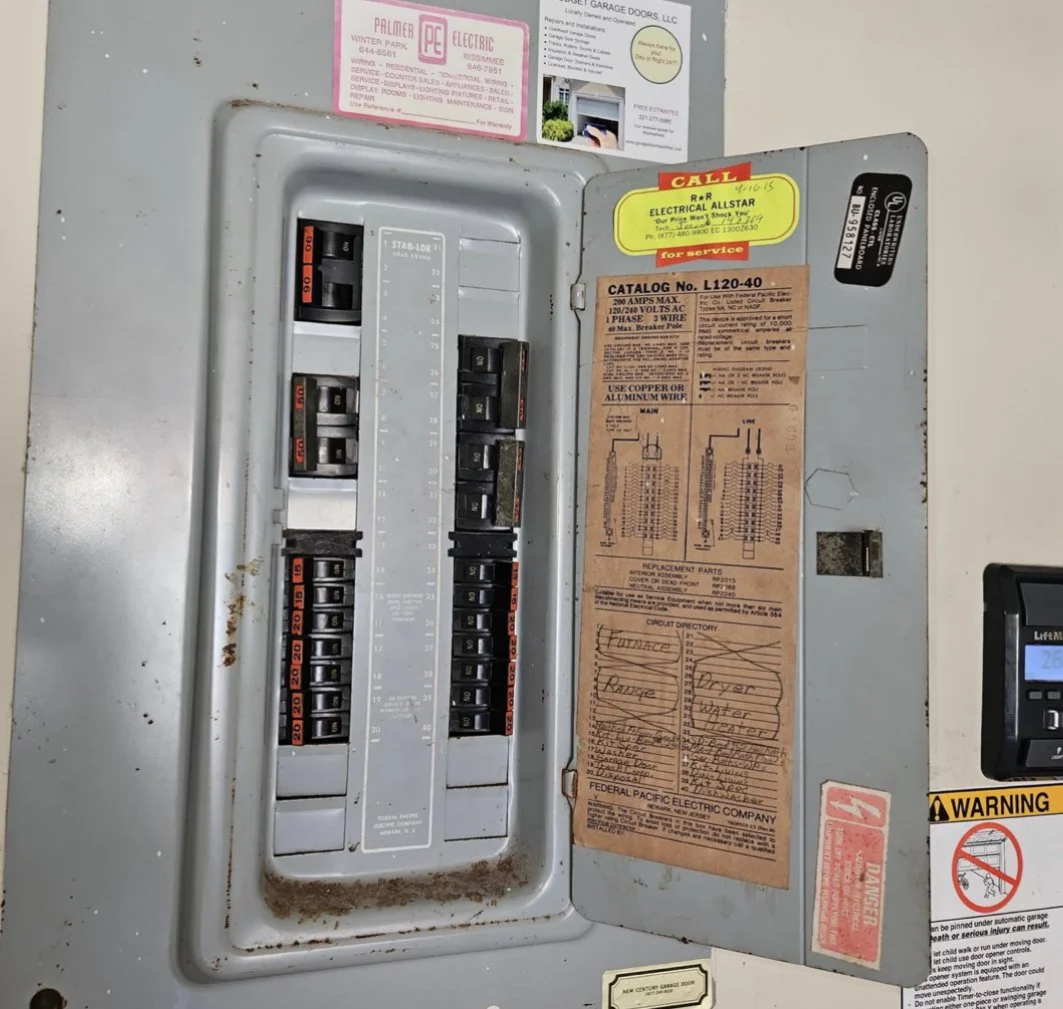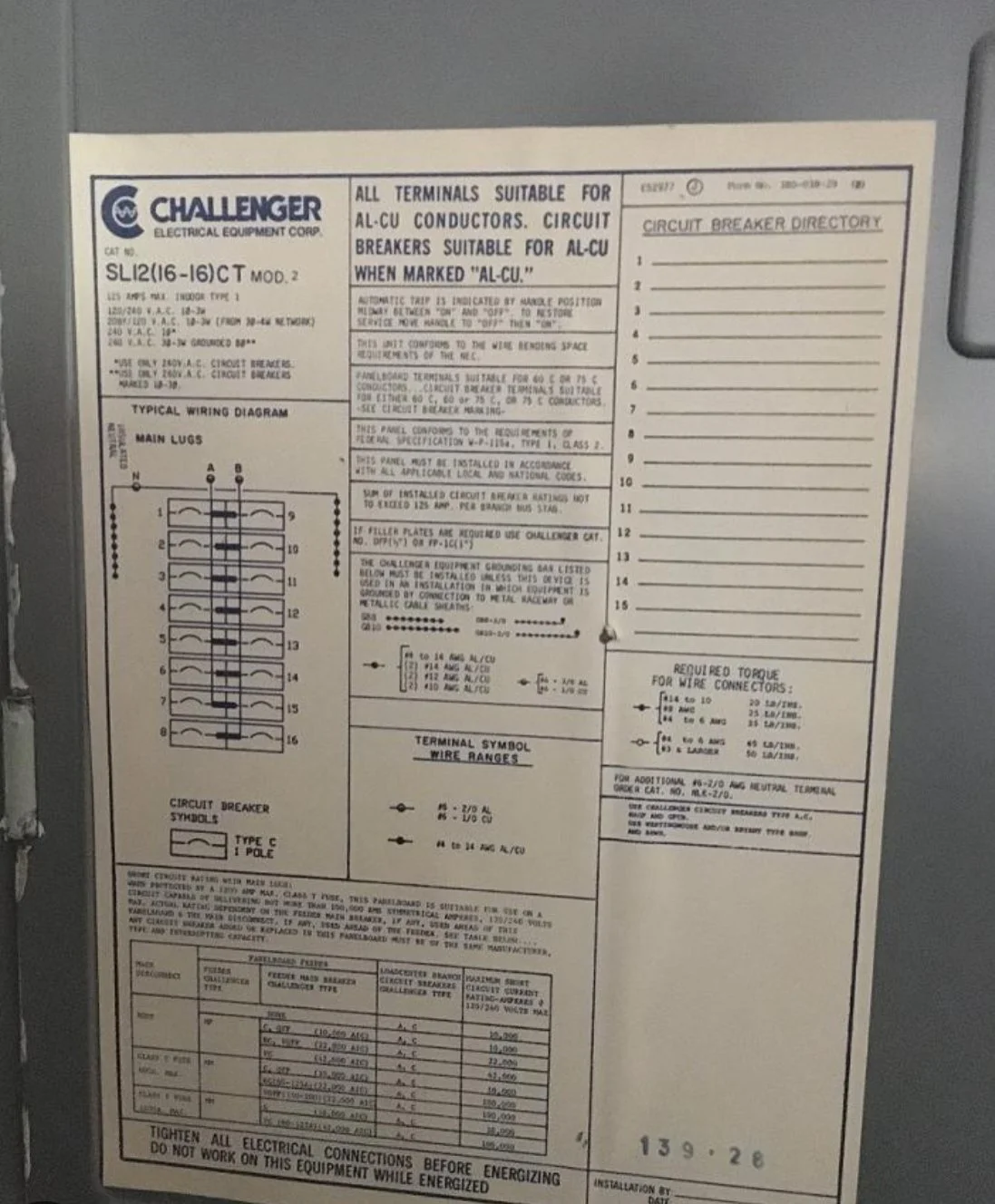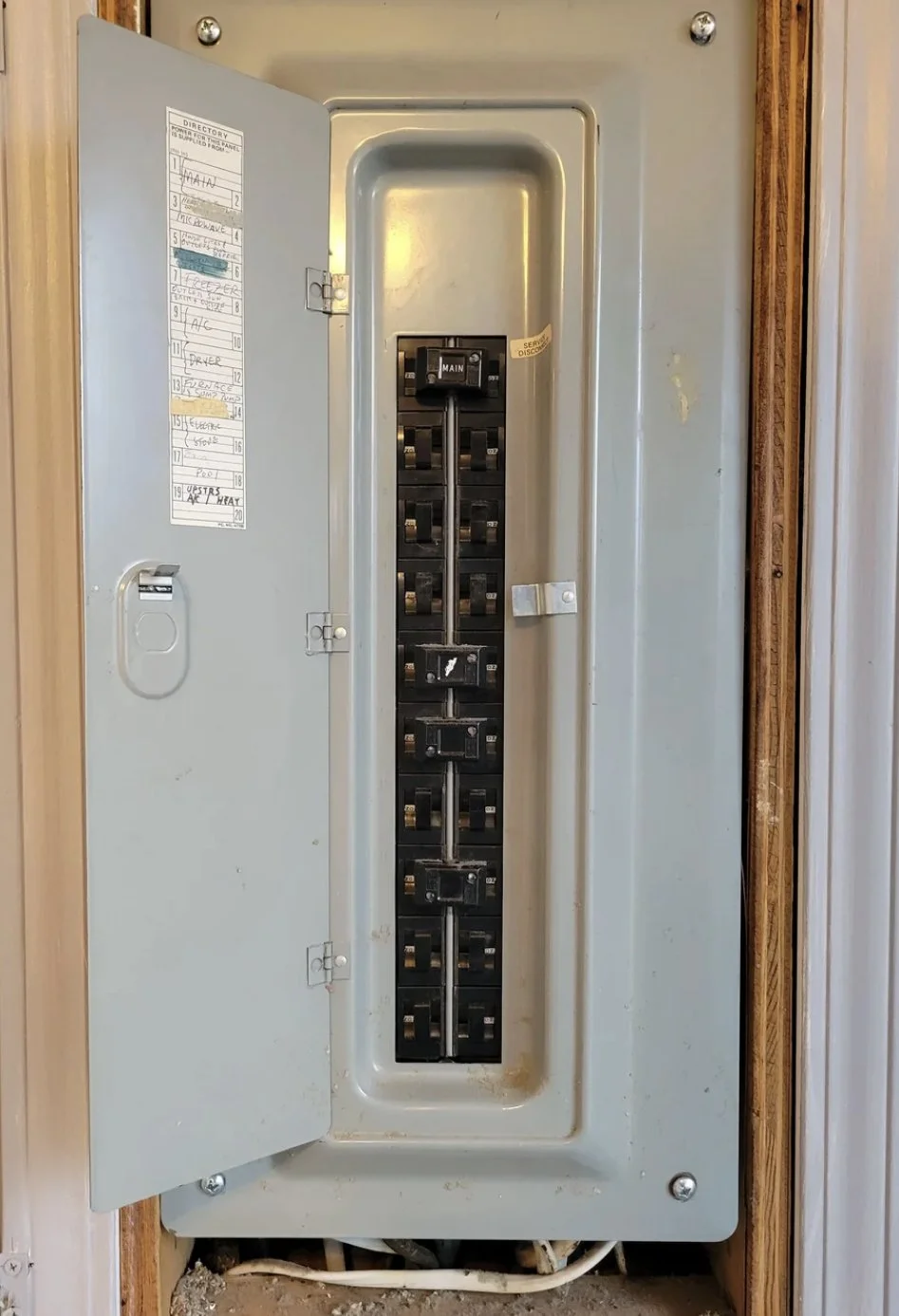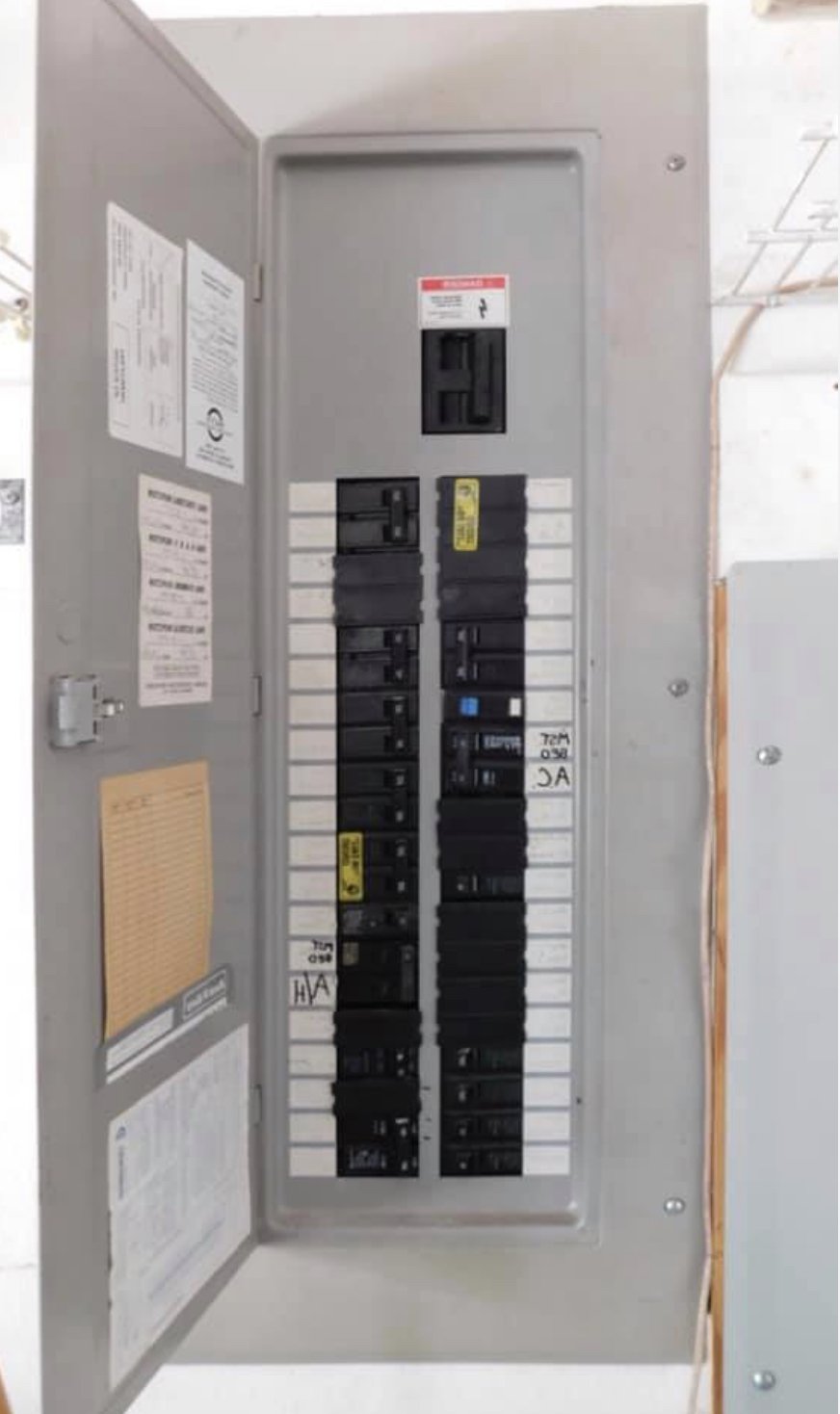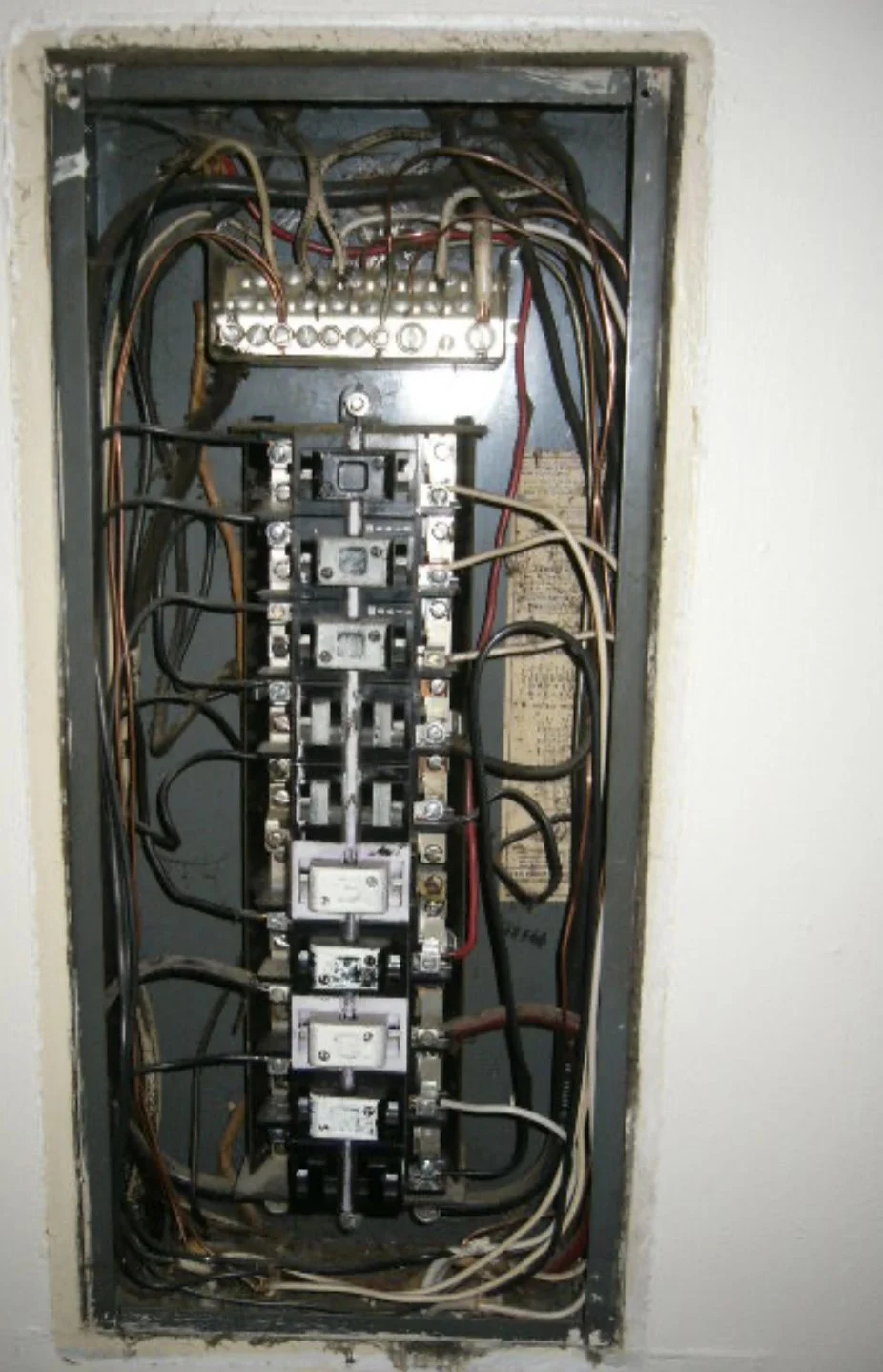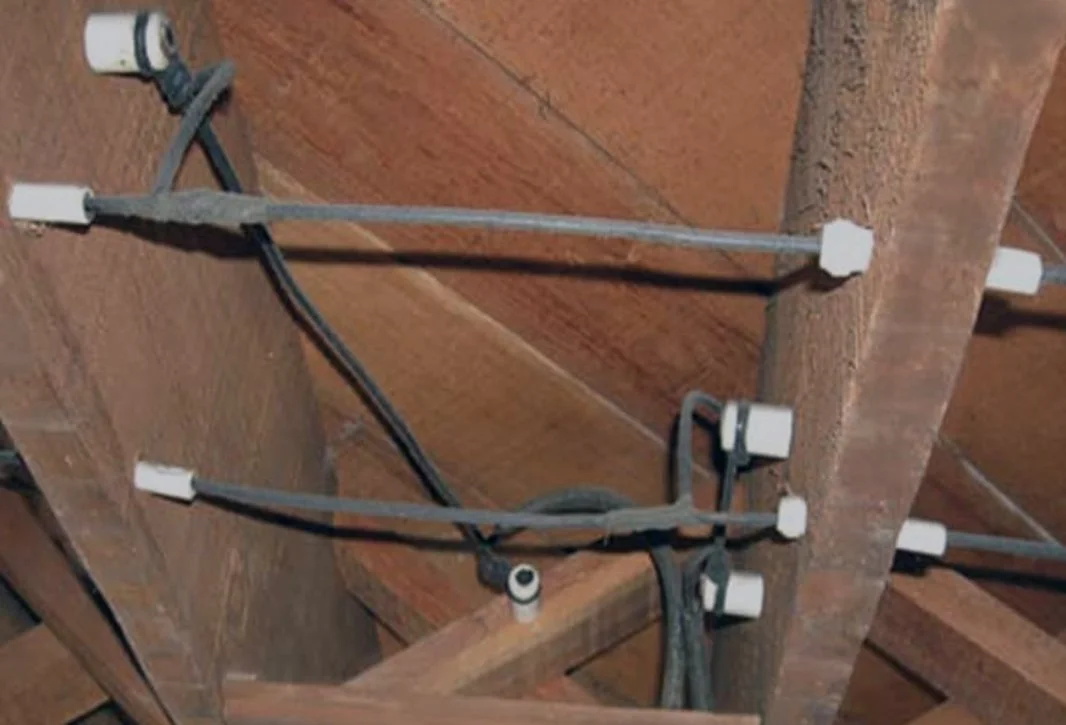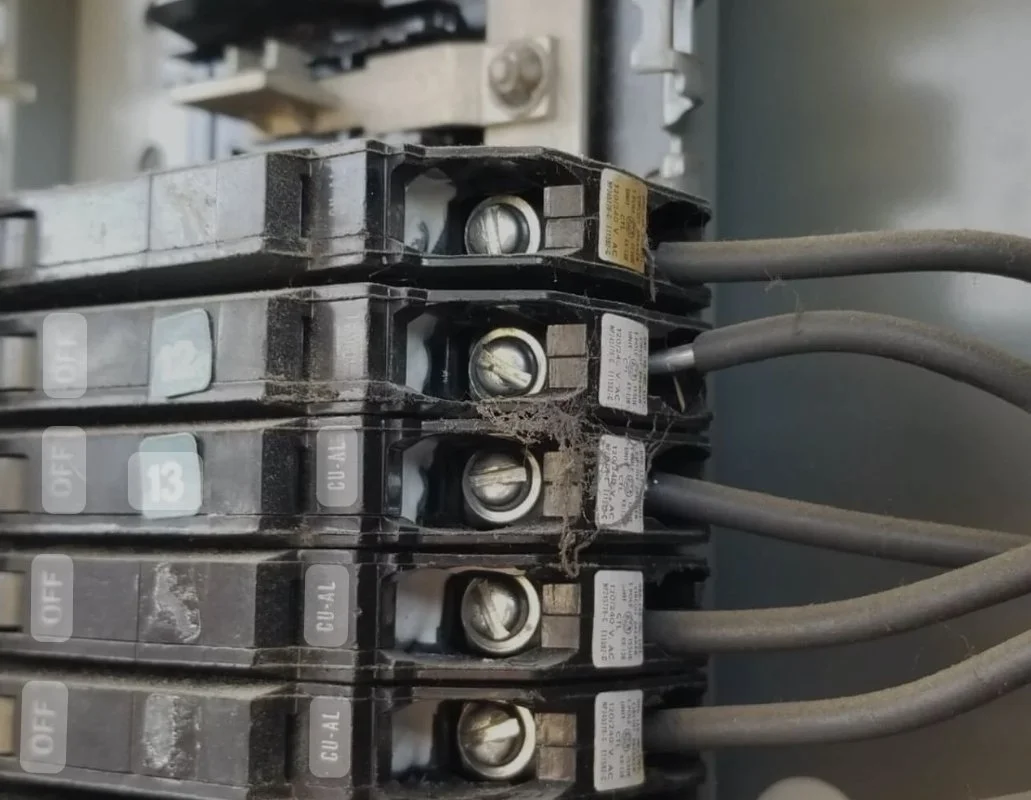
Electrical Maintenance
Inspect and Maintain Electrical Systems
-
Schedule periodic inspections by a licensed electrician to assess the condition of your home's electrical system, identify any potential issues, and ensure compliance with local codes and regulations.
-
Inspect outlets, switches, and cover plates for signs of wear, damage, or looseness. Tighten or replace them as needed to prevent electrical hazards.
-
Check for any visible signs of damage, wear, or exposed wiring, especially in areas prone to moisture or humidity. Address any issues promptly to prevent electrical fires or shocks.
-
Test ground fault circuit interrupter (GFCI) outlets monthly to ensure they are functioning correctly, particularly in bathrooms, kitchens, and outdoor areas where water is present.
-
Regularly inspect the electrical panel for signs of overheating, corrosion, or circuit breaker malfunctions. If you notice any issues, contact a qualified electrician for repairs or upgrades.
-
Ensure that outdoor outlets, lights, and fixtures are weatherproof and in good condition to withstand Florida's humidity, rain, and occasional storms. Replace any damaged or corroded components promptly.
-
Consider installing surge protectors and lightning protection systems to safeguard your home's electrical system from power surges and lightning strikes, which are common in Florida.
-
Keep your HVAC system clean and well-maintained, including the electrical components, to ensure efficient operation and prevent electrical issues.
-
Verify that your home's electrical system is properly grounded to protect against electrical shocks and ensure the safe operation of appliances and electronics.
-
If you live in a coastal area, be vigilant about potential corrosion from salt air. Use corrosion-resistant materials for outdoor electrical components and conduct more frequent inspections to prevent damage.
-
Consider upgrading to energy-efficient lighting, appliances, and HVAC systems to reduce energy consumption and lower utility bills. LED lighting, programmable thermostats, and high-efficiency appliances can help save energy and money.
-
Install a backup power system, such as a generator or battery backup, to provide electricity during power outages caused by severe weather or other emergencies.
-
Implement fire prevention measures, such as installing smoke detectors, carbon monoxide detectors, and arc-fault circuit interrupters (AFCIs), to enhance safety and protect against electrical fires.
Inspect and Maintain Electrical Panels
-
Regularly inspect the electrical panel for any signs of damage, corrosion, or overheating. Look for burnt or discolored areas, loose connections, or unusual odors, which may indicate a problem.
-
Ensure the area around the electrical panel is clear of clutter, debris, and obstructions to allow for easy access in case of emergencies or maintenance needs.
-
Test circuit breakers periodically by turning them off and then back on. This helps ensure they are functioning correctly and can trip in the event of an overload or short circuit.
-
Properly label each circuit breaker to identify which area or appliance it controls. This makes it easier to locate and isolate circuits during maintenance or troubleshooting.
-
Take measures to prevent moisture from entering the electrical panel, especially in humid climates like Florida. Ensure the panel enclosure is tightly sealed and free from any leaks.
-
Schedule regular inspections by a licensed electrician to assess the condition of the electrical panel and components. They can identify any potential issues and perform necessary repairs or upgrades.
-
Consider upgrading your electrical panel if it is outdated, undersized, or no longer meets your electrical needs. Upgrading to a newer panel with more circuits and improved safety features can enhance the overall reliability and safety of your electrical system.
-
Install surge protection devices at the electrical panel to safeguard your home's electrical system from power surges caused by lightning strikes, utility grid fluctuations, or electrical equipment cycling.
-
Always follow safety guidelines when working with electrical panels. Shut off the main power supply before performing any maintenance or repairs, and use appropriate personal protective equipment.
-
If you're unsure about any aspect of maintaining your electrical panel, or if you notice any signs of trouble, seek professional assistance from a licensed electrician. They have the expertise and experience to safely inspect, repair, or upgrade your electrical panel as needed.

Types of Outdated or Potentially Dangerous Panels
In Florida, as in many other states, certain types of electrical panels have been deemed unsafe and are no longer permitted for installation or use due to their potential fire and safety hazards. Here are descriptions of some of the dangerous panels that are no longer allowed in Florida, including Challenger panels:
Federal Pacific Electric (FPE) Panels
In Florida, as in many other states, certain types of electrical panels have been deemed unsafe and are no longer permitted for installation or use due to their potential fire and safety hazards. Here are descriptions of some of the dangerous panels that are no longer allowed in Florida, including Challenger panels:
Challenger Panels
Challenger panels, manufactured by Challenger Electric, were installed in some homes during the 1980s. Like FPE and Zinsco panels, Challenger panels have been found to have design flaws and inadequate safety mechanisms, increasing the risk of electrical fires and other hazards.
Certain Bulldog Pushmatic Panels
While not as common as FPE, Zinsco, or Challenger panels, certain Bulldog Pushmatic panels have also been identified as having potential safety issues, including problems with circuit breakers failing to trip when overloaded.
Unsafe DIY Panels
Additionally, panels that have been improperly installed or modified by homeowners or unqualified individuals may pose significant safety hazards. DIY modifications can compromise the integrity of the electrical system and increase the risk of electrical fires, shocks, and other dangers.

Types of Outdated or Potentially Dangerous Wiring
In Florida, as in many other states, certain types of wiring have been deemed unsafe and are no longer permitted for installation in homes due to their potential fire and safety hazards. Here are descriptions of some of the bad types of wiring that are no longer allowed in Florida homes.
Knob and Tube Wiring
Knob and tube wiring was commonly used in homes built before the 1950s. It consists of ceramic knobs and tubes through which wires are run to distribute electrical current. Knob and tube wiring lacks a ground wire, which increases the risk of electrical shocks and fires. Additionally, over time, the insulation on these wires can deteriorate, further exacerbating safety concerns.
Aluminum Wiring
Aluminum wiring was popular in homes built during the 1960s and 1970s due to its lower cost compared to copper wiring. However, aluminum wiring is more prone to oxidation and expansion than copper, which can lead to loose connections, overheating, and fire hazards. As a result, aluminum wiring is no longer permitted for branch circuit wiring in most residential applications.
Cloth Wiring
Cloth wiring, also known as fabric-covered wiring, is a type of electrical wiring that was commonly used in residential and commercial buildings from the late 19th century through the mid-20th century. It saw widespread use during the early 1900s up until the 1950s and, in some cases, the 1960s. before modern insulation materials became standard. Unlike modern electrical wiring, which typically features plastic or rubber insulation, cloth wiring is made of woven fabric, which is wrapped around the conductors to provide protection against electrical shock and to prevent short circuits. While the fabric insulation was adequate for its time, it does not offer the same level of protection and durability as modern insulation materials.
Over time, the fabric insulation on cloth wiring can degrade due to exposure to heat, moisture, pests, and physical wear. As the fabric becomes brittle or frayed, it can expose the underlying conductors, increasing the risk of electrical faults, shocks, and fires. Like knob and tube wiring, cloth wiring systems typically lack a grounding conductor, which is a critical safety feature in modern electrical systems. The absence of grounding increases the risk of electrical hazards and can make it challenging to safely install or use modern appliances and electronics.
Unapproved or DIY Wiring
Any wiring that does not meet current electrical code requirements or has been installed by unqualified individuals poses significant safety risks. DIY wiring installations may lack proper insulation, grounding, or circuit protection, increasing the likelihood of electrical faults, shocks, and fires.


